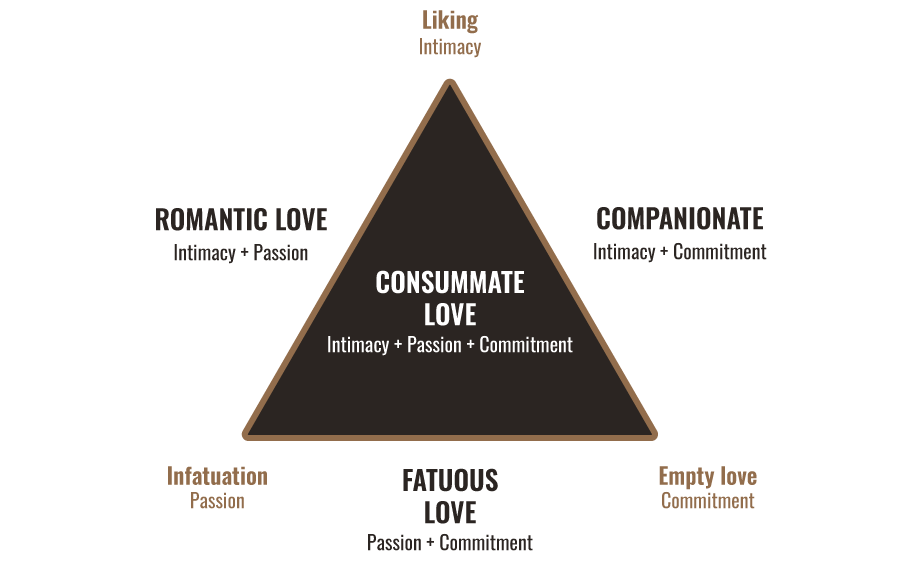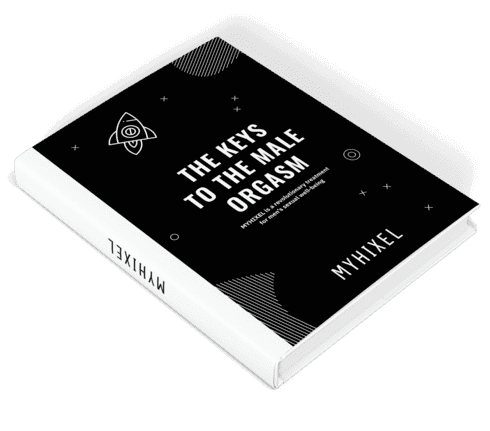Love is one of the most intense and complex emotions that we can experience in many different ways throughout our lives, which is why it is a topic that sparks discussion and continues to raise many questions. In this article, we will address the following questions: Are there different types of love? How long does infatuation last? What are the stages of a relationship?
It is often believed that love goes through different stages characterized by certain emotions and specific attitudes. Let’s dive in:
The 4 Stages of Love
Attraction Phase: During this phase, we feel drawn to a person and experience intense emotions such as excitement from desire and euphoria. Attraction can be based on physical appearance, personality, or other aspects that we find appealing, or a combination of several factors.
Infatuation Phase: When we fall in love, we often feel deeply connected to the other person and experience emotions like happiness, passion, and desire. During this phase, we also care about impressing the other person and make an effort to keep the flame of love alive. However, is the flame only kept alive by our actions? No! The chemicals we release play a primary role in infatuation, as they dominate most of our actions.

During this phase, our body undergoes various chemical and hormonal reactions. The main hormones involved are dopamine (associated with feelings of happiness and euphoria), norepinephrine (excitement and nervousness, even to the point of suppressing feelings of hunger and sleep), phenylethylamine (increases intensity, making us feel happy, optimistic, and motivated), oxytocin (released through physical contact, making us feel more connected to the other person), and serotonin (the neurotransmitter of happiness).
To the popular question “How long does infatuation last?” We can say that it varies from person to person and depends on different factors such as the intensity of feelings, frequency of encounters, quality of communication, and the response from the other partner because as we know, “it takes two to tango”.
According to research in the fields of psychology and neuroscience, the infatuation phase can last approximately 6 to 18 months, although this duration can vary from person to person.
Consolidation Phase: We feel more comfortable with our partner and begin to build a life together. During this stage, intimacy deepens, and more lasting commitments such as marriage, cohabitation, or joint projects are established.
Stabilization Phase: Love has been consolidated and has evolved into a more mature and stable relationship. While passion may decrease, a deep and lasting emotional connection is established. Stabilizing love involves accepting differences and working together to maintain a healthy and happy relationship.
The Triangular Theory of Love
As we mentioned earlier, as the stages of love progress, the feeling changes. Does this mean that there are different types of love? What components sustain and foster it? To address these questions, psychologist Robert Sternberg proposed the following theory.

This theory suggests that love can be understood as a combination of three components: intimacy, passion, and commitment.
- Intimacy: The emotional closeness and affectionate bond established between two individuals.
- Passion: The physical attraction and sexual desire felt towards the other person.
- Commitment: The desire and decision to maintain the relationship long-term, despite any difficulties that may arise.
The 7 Different Types of Love
Based on the combination of the three components of the triangular theory (intimacy, passion, and commitment), the following types of love can be distinguished:
- Affectionate Love: it involves intimacy but lacks passion and commitment. This type of love characterizes true friendships.
- Infatuation: it involves passion but lacks intimacy and commitment. It can be a short-lived romance or the beginning of a relationship with intense desire for intimacy but little trust and no commitment.
- Empty Love: it involves commitment but lacks passion and intimacy. This is common in transactional or long-term relationships where there is no trust or intimate connection, but a commitment to stay together.
- Romantic Love: it includes intimacy and passion but lacks commitment. This is the type of love often portrayed in movies and novels, such as the love of Romeo and Juliet.
- Companionate Love: it includes intimacy and commitment but lacks passion. It occurs when a couple lacks desire or excitement for each other but the shared experiences and companionship, especially with children, allow them to stay together. It appears satisfying for the individuals and can last a long time.
- Fatuous Love: it includes passion and commitment but lacks intimacy. It can occur in a relationship where the individuals desire a commitment largely driven by passion, but they don’t have many things in common.
- Consummate Love: it includes intimacy, passion, and commitment. It represents complete or ideal love, where all three components are present in a balanced and fulfilling way.
It is important to note that these categories are ideal and in real life, love is a complex experience that can include different combinations of these components and can evolve and change over time.
Conclusion
Have you identified with any specific model? Have you ever reached the final stage? If your answer to the latter question is “no,” don’t worry. Not all relationships reach this final stage. Each relationship is unique and influenced by various factors, such as each person’s personality, past experiences, and individual circumstances.
Author: Conchi Sánchez García (Sexual Coach at MYHIXEL)
Psychologist, child and adolescent therapist and sexologist.
Do you have any questions about our online consultation service? Contact us through our WhatsApp Business +34 643 84 91 23






